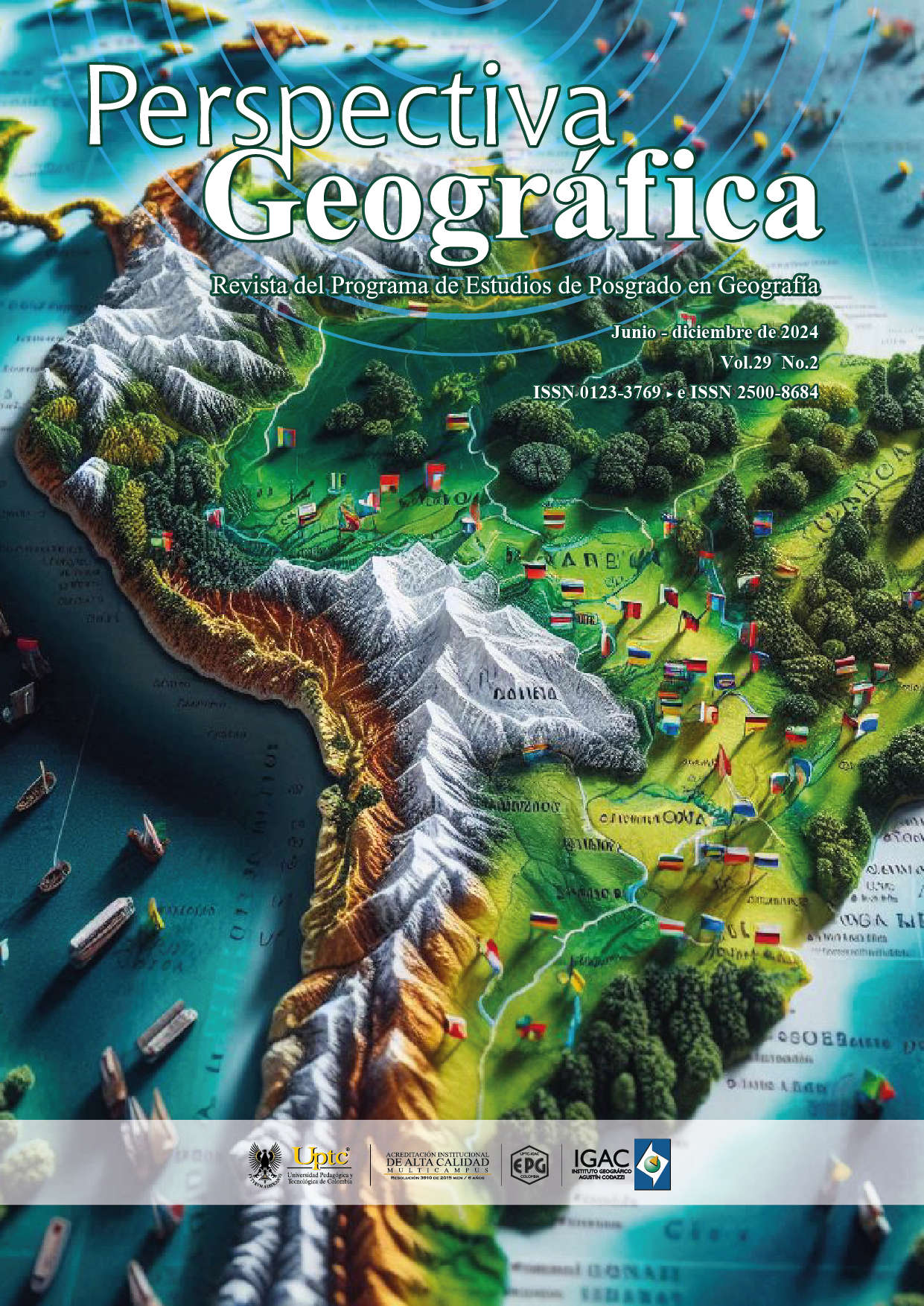Musical landscapes: The indigenous sound expressions of Los Pastos and its relationship with the andean territory of Nariño, south-west of Colombia

Abstract
According to the mythology of the indigenous people of Los Pastos, located inthe Andes of the department of Nariño, southern Colombia, their origin is the result ofthe union between the Cumbal Volcano and the Laguna de la Bolsa. This mythologicalorigin has allowed them to develop a cultural expression, related to their worldview andgeographical environment, very particular. This document explores the profound relationshipbetween geography and music in the indigenous people of Los Pastos. To do this, based onan ethnographic work, visiting the territory and interviews with the musicians SabedoresMajors, we investigate this relationship by studying the structure and the indigenous musicalexpression of the so-called mare bands of this ethnic community. It is established that threefactors that configure indigenous musical expressions: the originating factor, product of hisworldview in relation to his geographical environment; the external factor, as a constant ofmusical syncretism; and the geographical factor, which has made the territory of the ethnicpeople of Los Pastos a place of intercultural encounter.
Keywords
Knot of Los Pastos, Los Pastos, musical landscapes
References
- Banda de yegua pasto (2020, octubre 5). Yasacual / Leonardo Yépez Muñoz. [Video]. https://www.youtube.com/watch?v=t7i9DWM7Lc4
- Calero, L. F. (1991). Pastos, quillacingas y abades, 1535-1700. Banco Popular.
- Departamento Nacional de Planeación (2011). Plan de acción para la vida del Pueblo de los Pastos. https://colaboracion.dnp.gov.co/CDT/Consejo%20Nacional%20de%20Planeacin/Plan%20de%20vida%20del%20pueblo%20de%20los%20pastos.pdf
- Furlanetto, B. H. (2016). Paisagem sonora: uma composição geomusical. Em A. Dozena (org.), Geografia e música: diálogos (pp. 349-371). EDUFRN. https://repositorio.ufrn.br/bitstream/123456789/21381/1/Geografia%20e%20Música%20%28livro%20digital%29.pdf
- Galimberti, C. (2013). Paisaje cultural y región: una genealogía revisitada... GeoGraphos. Revista Digital para Estudiantes de Geografía y Ciencias Sociales, 4(54), 542-563. https://doi.org/10.14198/geogra2013.4.54
- Instituto Geográfico Agustín Codazzi (IGAC) (2014). Características geográficas de Nariño. IGAC.
- Laboratorio Creativomusical (2021, septiembre 28). 3 banda de yegua: Obonuco - Leonardo Yépez Muñoz. [Video]. https://www.youtube.com/watch?v=vJev-IQKO2E
- Laboratorio Creativomusical (2023, julio 7). 4 banda de yegua: ritual - Leonardo Yépez Muñoz. [Video]. https://www.youtube.com/watch?v=Y1XIlfx5NJo
- Mijal, G. (2018). Nociones de “paisaje” y “paisaje cultural”. Un estado de la cuestión. Pensum, 4(4), 44-56. https://revistas.unc.edu.ar/index.php/pensu/article/view/22649
- Ministerio de Cultura (2012). Pastos, los hijos del sol. https://www.mincultura.gov.co/areas/poblaciones/noticias/Documents/Caracterización%20del%20pueblo%20Pasto.pdf
- Moura, A. (2016). Geografía e música: aproximações e possibilidades de diálogo. Em A. Dozena (org.), Geografia e música: diálogos (pp. 104-132). EDUFRN.
- Narváez, G. A. (Ed.) (2006). Elementos para la historia económica del departamento de Nariño. Tendencias, 8(2), 7-28. https://revistas.udenar.edu.co/index.php/rtend/article/view/642
- Nogué, J. (2007). La construcción social del paisaje. Digitalia.
- Pantoja, J. (2021). El Inti Raymi como espacio-tiempo de construcción de alternativas al desarrollo. [Tesis de maestría]. Universidad de los Andes. http://hdl.handle.net/1992/55734
- Rosas, J., & Fusté-Forné, F. (2018). Authentic heritage? The Negros y Blancos carnival in the city of Pasto, Colombia. Investigaciones Turisticas, 15, 147-167. https://doi.org/10.14198/INTURI2018.15.07
- Salas, L. G. (2010). Corredores y territorios estratégicos del conflicto armado colombiano: una prioridad por territorializar en la geopolítica de los actores armados. Perspectiva Geográfica, 15, 9-36.
- Salas, M. (1998). Banda Departamental de Músicos de Nariño: historia.
- Fondo Mixto de Cultura de Nariño.
- Sauer, C. O. (2006). La morfología del paisaje. Polis, Revista de la Universidad Bolivariana, 5(15). http://www.redalyc.org/articulo.oa?id=30517306019
- Schafer, R. M. (1967). The book of noise. The Unesco Courier. https://www.sfu.ca/sonic-studio-webdav/WSP_Doc/Booklets/BookOfNoise.pdf
- Smith, S. J. (1994). Soundscape. Area, 26(3), 232-240. http://www.jstor.org/stable/20003453
- Toffolo, R., Oliveira, L., & Zampronha, E. (2003). Paisagem sonora: uma proposta de análise. 14o Encontro da Associação Nacional de Pesquisa e Pós-graduação em Música (pp. 1-11). http://cogprints.org/3000/1/Toffolo_Oliveira_Zampra2003.pdf
- Torres, M. A., & Kozel, S. (2010). Paisagens sonoras: possíveis caminhos aos estudos culturais em geografia. RAEGA - O Espaço Geográfico em Análise, 20. http://dx.doi.org/10.5380/raega.v20i0.20616
- Tuan, Y.-F. (1975). Topophilia: A Study of Environmental Perception, Attitudes and Values. Journal of Architectural Education, 29(1), 32. https://doi.org/10.1080/10464883.1975.10758016
- Uribe, M. V. (1986). Etnohistorias de las comunidades andinas prehispánicas del sur de Colombia. Anuario Colombiano de Historia Social y de la Cultura, (13-14), 5-40. https://revistas.unal.edu.co/index.php/achsc/article/view/36145
- Valenzuela, Á. R. (2019). Identidad cultural del pueblo indígena Pasto y su relación con la sostenibilidad del territorio. [Tesis de maestría]. Universidad de Manizales. https://ridum.umanizales.edu.co/xmlui/handle/20.500.12746/4356
